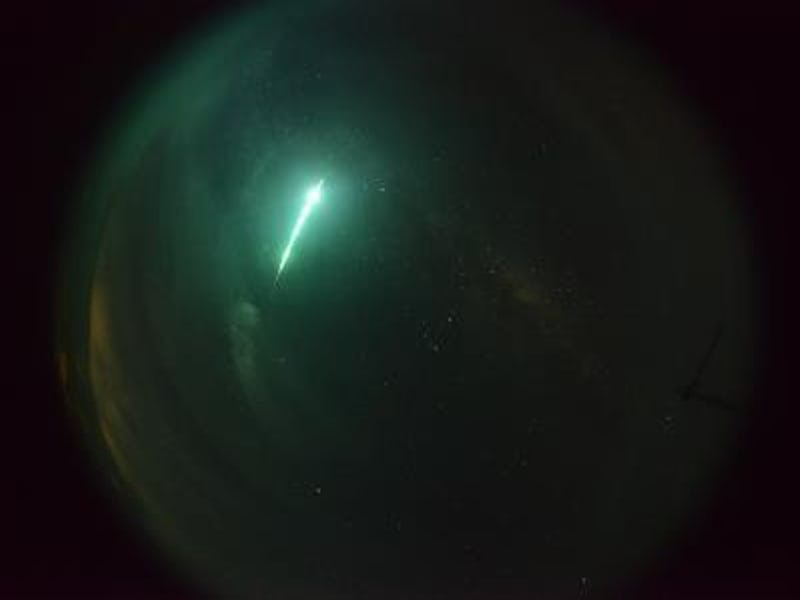Desert Fireball Network Needs Help Tracking Exploding Meteors

Asteroids and other objects get incinerated by Earth’s atmosphere all the time — and when they do, the result is a spectacular ball of flame torching up the sky before the entire rock is incinerated into next to nothing. The Desert Fireball Network, based out of Curtin University in Perth, Australia is made up of a group of scientists whose sole mission is to look for and study those fireballs as they streak descend into the planet. They are like storm chasers, but for exploding meteorites. And they are asking the public to help them out.
The DFN uses a network of several dozen cameras to track said fireballs over the western part of the continent. Now, the scientists have revealed that on Halloween, four of their cameras tracked a two-and-a-half pound meteorite as it crash-landed near Perth — and that they’ve already recovered it for study. The quick turnaround means minimal contamination, which in turn should mean a more fruitful analysis of its materials.
“It’s bonkers,” DFN founder Phil Bland told WAtoday. “I find it very difficult to believe sometimes that this is my job. A colleague has already done a CT scan on the new meteorite and we can’t wait to look at it more closely and see what we find.”
If you want to be a part of this — and of course you do — you can download their app and begin your own citizen scientists/fireball vigilante career of reporting literally-on-fire asteroids if and when you see them. DFN, it must also be said, has taken the important step of buying the very good URL Fireballsinthesky.com.au.
Once a suitably interesting fireball is identified (and government permission obtained, if necessary), the team literally sets off on foot and/or mountain bike to retrieve it from whichever godforsaken corner of the Australian desert it happened to crash into.
Asteroids are ideal objects of study to help us understand the origins of other celestial bodies in our galaxy — since they’re often pure and uncontaminated by foreign objects, due to traveling alone for such extended periods of time, their mineral composition is often an unchanged time capsule to the earliest days of our solar system.